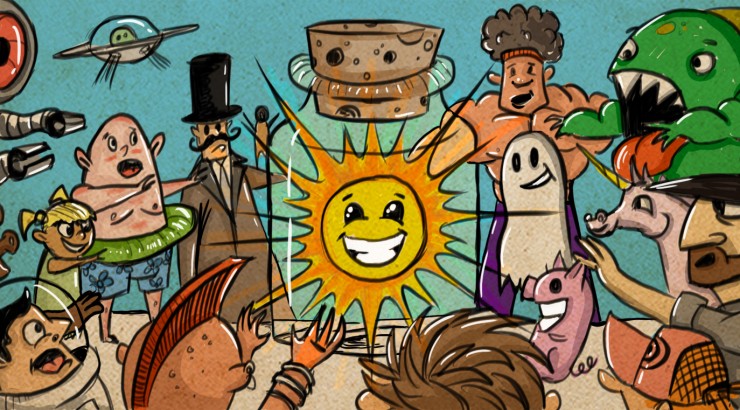Bottling Good Nature: Using Positively Charged Content to Build Your Brand
December 16, 2013
Unless you’ve been hiding out in a black hole or living wild with the bears, you may have noticed the giant shift in the marketing landscape over the last decade. No longer are marketers allowed to rely solely on traditional advertising to get their perfectly crafted messages to stick. Instead, since we live in a very socially connected society, we see a heavy push toward content marketing. The goal now is to be a part of the conversation by pushing content that is interesting to the audience. In return, they will share it with their peers and do the marketing for you.
That being said, I believe that we, as marketers, still have a long way to go before truly harnessing this awesome power. It’s one thing to get your cat-jumping-into-a-box video to go viral, but another to have that content positively promote your company. Good thing is, there is a solution.
We need to bottle good nature.
I believe that if companies focused their advertising budgets on charitable activities that also showcase their unique attributes, then package that good deed for mass consumption, their return on brand equity would skyrocket, and the sharers of the world would spread the content like wildfire. This would essentially create a win/win/win situation where the charity, the company, and the audience all benefit, and most importantly, we would see an increase of businesses donating their services to the needy.
To help you picture what I am talking about, here are a few examples of companies using these methods currently.
Toyota: Using their Manufacturing Expertise for Good
Toyota created the video below showcasing their legendary Toyota Production System (TPS) to help increase the efficiency and amount of meals delivered to people who were affected by superstorm Sandy. On top of this, Toyota was offering one meal for each view of the video.
Google: Providing Access to the Unreachable
I must preface this by saying the video below is just one of the many wonderful charitable things Google does on top of owning a lot of great technology. Check out Google.org for yourself to learn more. This video and Project Loon itself are a perfect example of bottling good nature to create a win/win/win situation. Charity doesn’t need to be one sided. Google knows that the more people they help get online, the more it helps their overall business. This is not a negative thing, it’s smart.
Rice University: Showcasing the Engineering Programs and Giving Back
Now you’re probably saying, “Of course Google and Toyota can do this. They have the resources.” Well, I present this wonderful video that Rice University put together. It showcases their engineering students and academic program, all while providing a handicapped, and very deserving, individual a freedom that most of us take for granted.
WestJet Christmas Miracle: Real-time Giving
So as I was writing this post I was hit by a giant viral snowball that was the WestJet Miracle. To say this campaign was a success would be an understatement. 17 million+ views in, this charitable deed has probably done more for their company than all the traditional ads they bought in a year.
The Science Behind the Magic
Now that you’ve been exposed to some examples and felt the warmth inside, here is a little bit of the science behind why this method is successful. The identified elements below are taken from the research and writings of Jonah Berger, author and professor at the Wharton School of Business. If you’re interested in learning more about viral content and business in general, I highly recommend his writings.
Emotional Arousal – It has been proven that content that evokes “high arousal emotions” becomes more viral than content without. If you can tap into the awe, surprise, and joy of something, then you are well on your way. Charitable stories tend to tug pretty hard on the ol’ heartstrings. (This method also works for negative emotions, but that is for another blog post.)
Social Currency – People like to post things that build their personal brand. Just like your personal possessions, what you post online builds your image. Promoting charitable stories are a non-offensive way of building your personal brand and helping awareness for a cause.
Story-based Content – Nobody likes to be advertised to. Traditional advertising is tainted with insincerity, and most viewers likely tune it out. Berger suggests, “build a ‘Trojan horse’ story, a message that carries your brand along for the ride.” And while this may sound devious, it is actually more beneficial to the audience by giving them content with substance.
Looking Ahead
Can you imagine a world where companies used their marketing efforts toward good? It’s crazy to think how much money gets tossed into the advertising rabbit hole each year. I am optimistic that with the change in how people are getting marketed to, we as marketers can use our power for good and be successful. I believe that every company, big or small, that is trying to create awareness about their product or services should be attempting these methods. There is no better publicity than offering your services to better the world.
What are your thoughts on the subject? Do you know of any cool examples? I am by no means an authority on the subject, but I think there is something here we can build on. Happy holidays.
